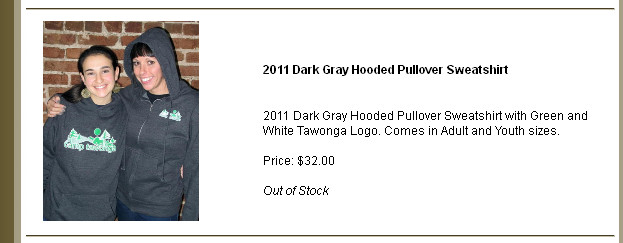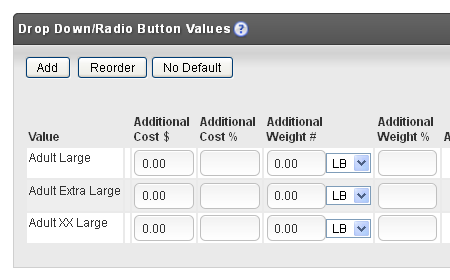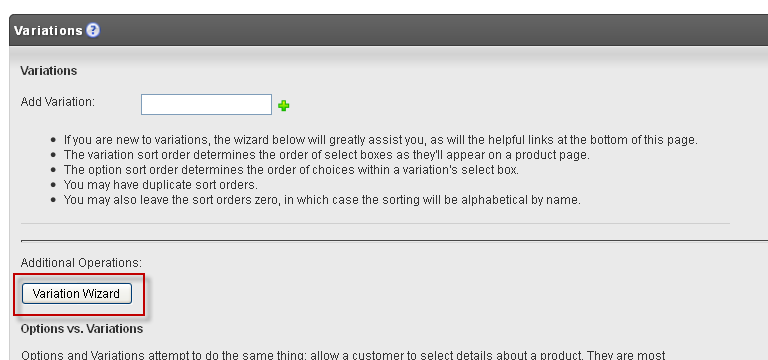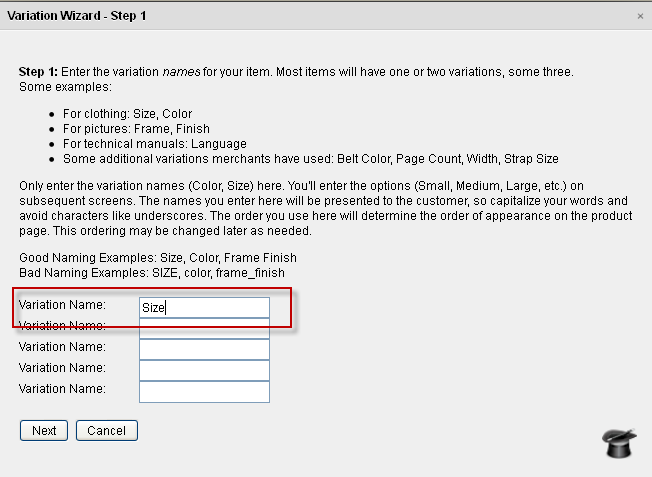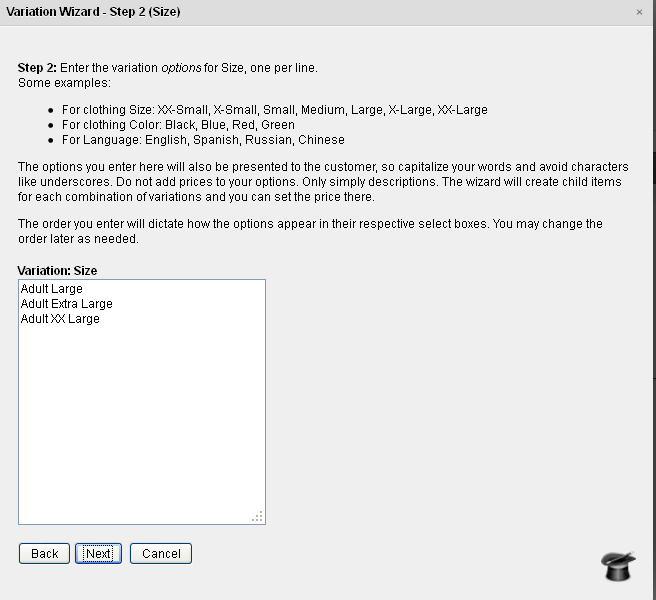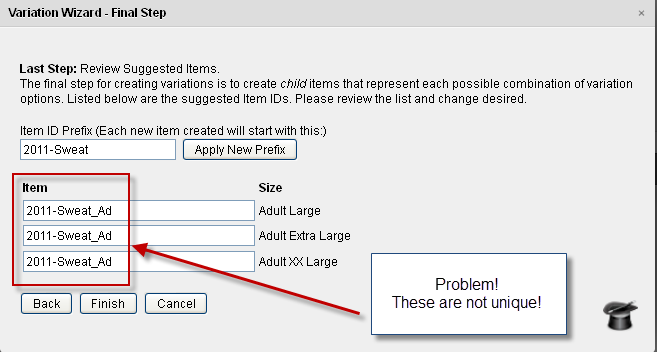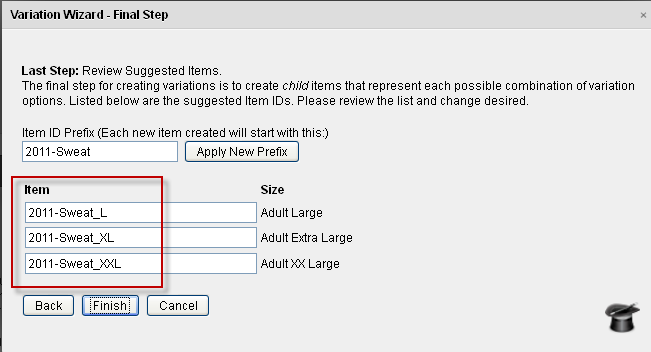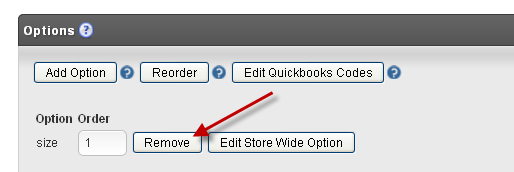This tutorial instructs how to switch from item Options to using Item Variations using a case study from an actual UltraCart merchant.
Variations and Options serve the same purpose: they allow customers to select options for a product. While both are quite powerful, variations take things to a higher level by actually substituting product. When a customer selects an item with a variation and add it to their cart, the UltraCart engine will read the variations, and determine the replacement item to add. By doing the switch, the merchant now can enable and entirely separate item configuration. This includes separate inventory by size, the ability to have recurring orders, additional cost structures, separate shipping and fulfillment options – everything may change.
While this results in an additional item for every variation option, the added item count is worth the flexibility.
Introduction
The merchant was selling clothing. One of the items was a hooded sweatshirt. This sweatshirt came in two styles: hooded, and hooded with zipper. The merchant was using options to specify sizes, but needed to tracking inventory for both styles and sizes of clothing. She turned to variations to manage inventory.
The current item had one option, Size.
The size option had these values: Adult Large, Adult Extra Large, and Adult XX Large.
The rest of this tutorial will show the steps taken to convert this item from the options above to using variations.
Steps
Navigate to the Catalog Tab.
Click on the Variation Wizard button. It's at the bottom of the Variations section.
For Step 1, enter the variations needed. For this example, we had a single variation Size. Enter that.
For Step 2, enter the Size options review, they were Adult Large, Adult Extra Large, and Adult XX Large.
On the final screen, we're presented with a list of proposed child items that will map to each variation.
We have a problem.
Notice in the picture below that all the item IDs are the same. Item IDs are limited to 20 characters, and the system detects suggested names that are too long and abbreviates them.
So, we will edit the names, giving them uniqueness.
When we click the Finish button, the items are created by copying the parent item and then displayed for us to review.
If everything looks good, the last step is to remove the Options associated with this item.
Click on the Options tab, and then remove the Size option.
Final Product
The final step to making your web page use these variations is to add code to your template.
Please see the article Using Variations on a Non-Catalog Site for instructions.
Here is the code that was used on this site to show the variations properly.
Header Code
<script type="text/javascript" src="/js/jquery-1.7.2.min.js"></script> <script type="text/javascript" src="/catalog_3.0.js"></script>
Product Page Code
#set($hasVariations = $item.getVariations().size() > 0)
#if($hasVariations)
<form action="http://secure.ultracart.com/cgi-bin/UCEditor">
<input type="hidden" name="merchantId" value="2892A"/>
<input type="hidden" name="ADD" value="$item.getMerchantItemID()"/>
<script type='text/javascript'>
ucCatalogVariationsInit("$item.getMerchantItemID()", ${item.getVariationMatrix().getJavascriptItemVariationMatrix()});
</script>
<table>
#foreach($variation in $item.getVariations())
<tr>
<td>
<span
class='uc-variation-label-${velocityCount}-${item.getMerchantItemID()}'>: </span>
</td>
<td><input type='hidden' name="VariationName${velocityCount}" value="${variation.getName()}"/>
<select name="VariationValue${velocityCount}"
id="uc-variation-field-${velocityCount}-${item.getMerchantItemID()}"></select>
</td>
</tr>
#end
</table>
<input type="submit" name="submit" value="Add to Cart"/>
</form>
#else
#if($item.getAvailableQuantity() > 0)
<form action="http://secure.ultracart.com/cgi-bin/UCEditor">
<input type="hidden" name="merchantId" value="2892A"/>
<input type="hidden" name="ADD" value="$item.getMerchantItemID()"/>
#foreach($option in $item.getOptions())
<input type='hidden' name='OptionName$velocityCount' value='${option.getName()}'/>
##$option.getLabel()
<select name='OptionValue$velocityCount'>
#foreach($optionValue in $option.getDropDownValues())
<option>$optionValue</option>
#end
</select>
#end
<input type="submit" name="submit" value="Add to Cart"/>
</form>
#else
<em>Out of Stock</em>
#end
#end
